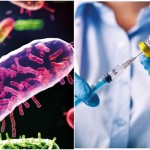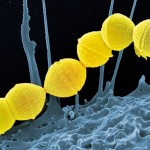Flesh Eating Bacteria; Do we need to worry?
View(s):Most people assume that pandemics are brand -new diseases that arise out of the blue, and infect the entire population of the world. This is a myth. These diseases have always been there. Some have been mild, so they go unnoticed, some are very rare, so they go unnoticed as well.
An epidemic is a rapid spread of disease to a large number of hosts in a population within a short period of time. If this disease cannot be controlled and crosses the oceans, spreading to the international boundaries, then it becomes a pandemic. In that case, you do need to panic!
The COVID-19 pandemic has been the fifth documented pandemic since the 1918 flu pandemic. Diseases are mainly planet Earth’s way of controlling the population. But we humans have always known to outsmart these diseases over time and eradicate them.
So what is this deadly bacterial infection that’s been spreading like fire? A bacteria called Group A Streptococcal bacteria. Now this bacteria has always been diabolical, mainly because of the toxins they can produce which harms the body. It’s known to cause many harmful diseases, even after it’s been treated. The difference is that it’s become more prominent now. It ranges from minor to major diseases. It causes minor diseases in children like a simple throat infection, or blister attacks, like Scarlet Fever, and impetigo. It can also cause serious infections like cellulitis, and necrotizing fasciitis, which spreads at a very rapid rate.
The main difference between a virus and a bacteria is that bacterial infections can be treated effectively using antibiotics. Viruses can be more virulent and they’re harder to control: which was probably why it took so long to stop the spread and develop herd immunity using the vaccine.
This disease known as the ‘Streptococcal Toxic Shock Syndrome’ (STSS) is a rare but serious infection that can develop very quickly into a life-threatening emergency. As I mentioned previously, even though bacterial infections can be controlled using antibiotics, prompt attention and intervention using high-dose intravenous antibiotics is crucial. The problem rises when there is a failure or delay in identifying the disease.
The first symptoms of this include fever, chills, muscle aches, nausea, and vomiting, limb pain and swelling. After 24 to 48 hours, low blood pressure typically develops and can cause more serious damage to end-organs. Since this bacteria is fast-acting, even with treatment, it can lead to high mortality rates. Doctors might even have to recommend limb amputation to stop the spread. If this bacteria cannot be stopped, it invades the entire body and causes septic shock, eventually leading to death.
As with usual diseases, there are groups of people who are at high risk of developing this infection. They include immunocompromised people, pregnant women, having open wounds, diabetics, patients who have had recent surgeries, and elderly people over the age of 55.
You might have seen statistics being displayed on the news, the numbers arising from country to country. These numbers are shown on the news so that the public will be vigilant about the disease and identify the symptoms early to get proper treatment on time. Therefore, the public is urged not to panic but to be mindful.
The prevention of this includes maintaining proper hygiene, hand washing, treating any bacterial infections promptly, and keeping a close eye on any wounds, cuts or infections in the skin. Once the bacteria gets to the bloodstream, due to its toxin-releasing ability, it can spread through the body, and can even cause death within a very short period of time, even as short as 48 hours!
941 cases of STSS have been reported during this year in Japan, and officials say that this could go up to 2500 for the remainder of the year. The death rate being around 30%. Infections always test the body’s ability to fight against pathogens and therefore it is important that we keep our immunity system as strong as ever! Some resources claim that the spread could be due to the weakened immunity following COVID.
This disease has always been there, just rare. It’s rise is being studied and Sri Lankans have been informed not to worry about it too much, but to keep a watchful eye out!
Priyanjalaa Sumanasekara
Faculty of Medicine,
University of Kelaniya.
HitAd.lk is the best and biggest mobile phone market in Sri Lanka, and we guarantee you will find what you need here from our extensive listing of mobile phones for sale in Sri Lanka. Whether it’s a budget-priced smartphone for communication, or higher end features with advanced connectivity, there are many different options from which to choose from on our site!





